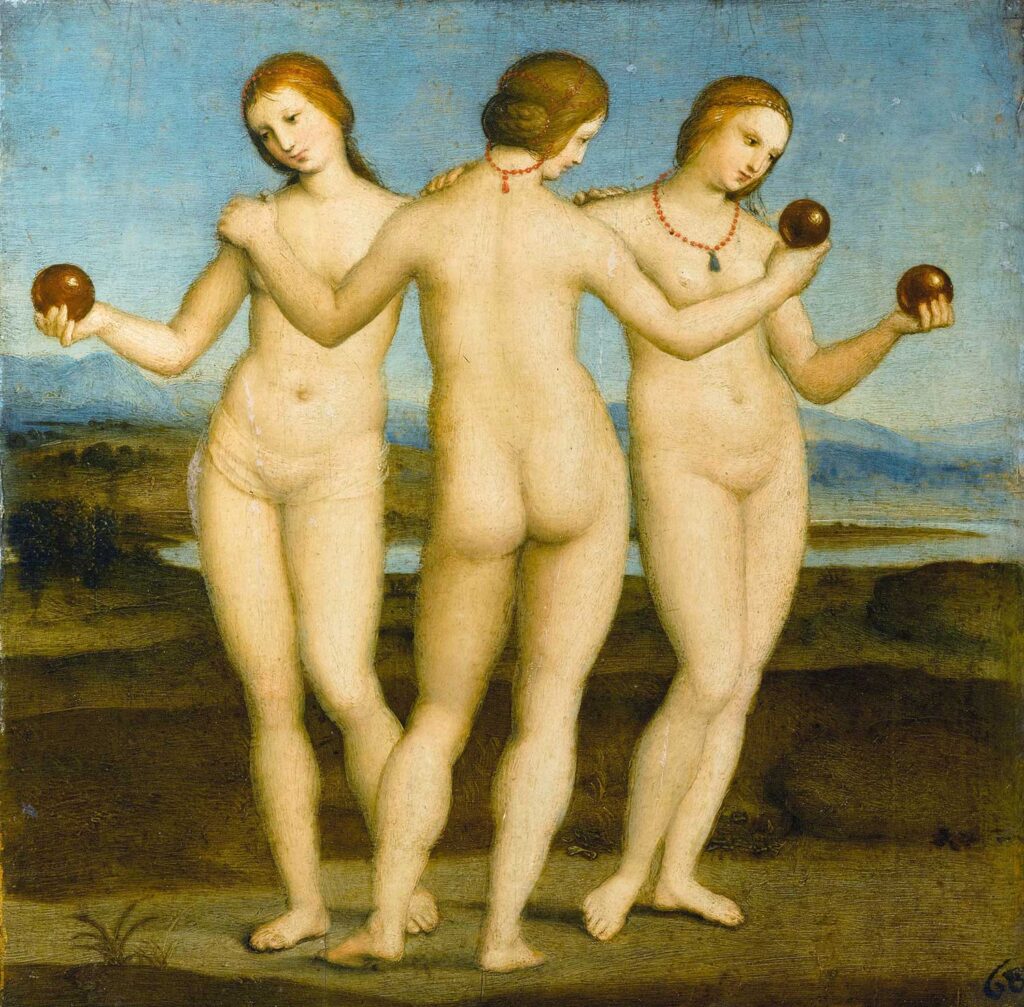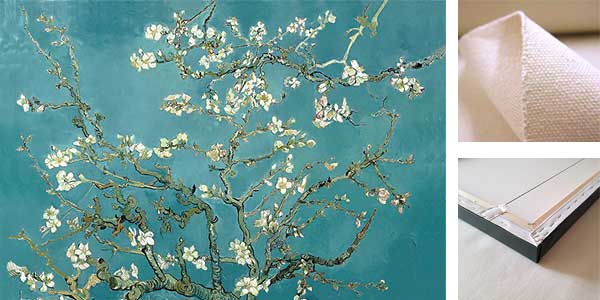The Three Graces by Raphael was created in 1504 – 1505. The painting is in Musée Condé, Chantilly. The size of the work is 17 x 17 cm and is made of oil on panel.
This painting is the smallest in Chantilly but also the most precious: inspired by an antique marble statue, it is one of the few profane works painted by Raphael (1483-1520). An X-ray of the painting revealed that its composition had been changed by the artist: originally, only one of the three women was holding a golden ball in her hand. This would be a depiction of the Judgement of Paris and the three Greek goddesses: Hera, Athena and Aphrodite. Subsequently, Raphael changed his mind and put an apple in each woman’s hand, making them Hesperidia, who conferred immortality to humans by giving them apples. Read more in Musée Condé.
About the Artist: Italian painter and architect of the High Renaissance Raphael was born in the small but artistically significant central Italian city of Urbino in the Marche region. Most modern historians agree that Raphael at least worked as an assistant to Perugino from around 1500. Raphael led a “nomadic” life, working in various centres in Northern Italy, but spent a good deal of time in Florence, perhaps from about 1504. Although there is traditional reference to a “Florentine period” of about 1504–1508, he was possibly never a continuous resident there… read more
Order a reproduction of this work (printed on canvas)

